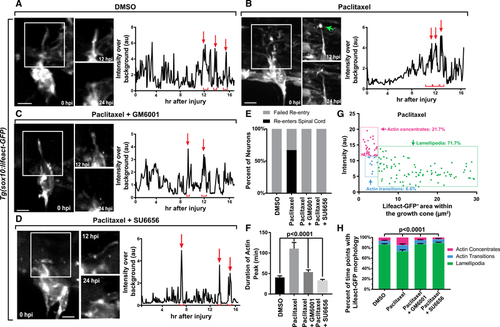Figure 2.
- ID
- ZDB-FIG-200205-25
- Publication
- Nichols et al., 2020 - Functional Regeneration of the Sensory Root via Axonal Invasion
- Other Figures
- All Figure Page
- Back to All Figure Page
|
(A–D) Z-projection time-lapse images of avulsed DRG in (E) Graph of spinal re-entry in axons treated with DMSO, Taxol, Taxol+GM6001, and Taxol+SU6656. (F) Duration of actin concentrates in DMSO axons (n = 7), Taxol axons (n = 6), Taxol+GM6001 axons (n = 6), and Taxol+SU6656 axons (n = 4). (G) Representative scatterplot of growth cone area and average Lifeact-GFP intensity during regeneration in an axon treated with Taxol. Each time point is represented by a point. (H) Percentage of time points for which the regenerating growth cone displayed each actin organization. Tukey’s HSD was used in (D) and two-way ANOVA was used in (H). Scale bar, 10 mm. |

